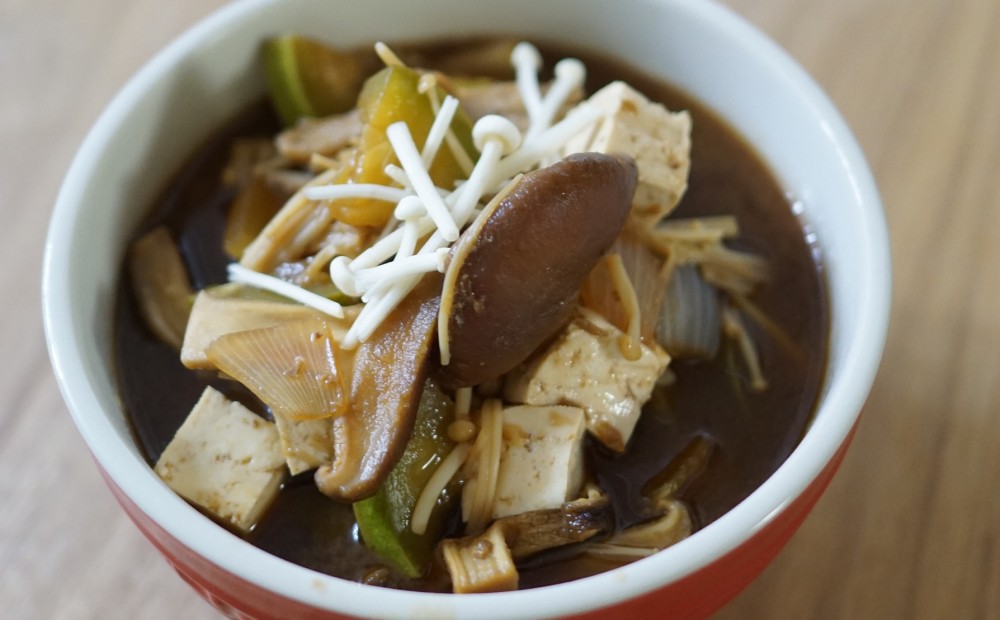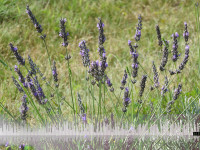Winter. Shorter days, grey skies, frozen windscreens. We can’t avoid it, we can’t escape it. It happens to us all, but some struggle with it a lot more than others. Seasonal Affective Disorder (SAD) can strike at any time in your life. You may have previously spent decades coping perfectly fine wearing extra socks, and then one morning on your daily commute to work in the dark when you realise you can’t remember the last time you looked at the sky and saw blue; and it hits you. After a slow accumulation of this lack of daylight, you might find yourself displaying symptoms of SAD to a point where it begins to cause trouble in your day-to-day life.
Symptoms of SAD include:
+ A lack of energy for everyday tasks, such as studying or going to work
+ Trouble concentrating
+ Generalised depression – (feeling sad, low, tearful, guilty)
+ Anxiety and Panic Attacks
+ Insomnia
+ Catching a lot of virus’ (SAD lowers your immune system during the winter)
+ Social and relationship problems
(Source- Mind http://www.mind.org.uk/information-support/types-of-mental-health-problems/seasonal-affective-disorder/causes/#.Vp4L-TaI0ns)
A common treatment for SAD is Light Box Therapy. The exposure to the light imitates sunlight, topping you up with melatonin that you are extremely lacking due to winter. Although, some people find this a pricey treatment, and is often only used when sufferers feel it is chronically affecting their lives year after year. For those who are beginning to feel the early symptoms of SAD, primarily low mood, depression, anxiety and insomnia, there is another way to feed your body that daylight it is craving. Literally, feed it.
A change in your eating habits might be all you need. To encourage your body to absorb serotonin you will need to begin with an Omega 3 boost. Foods that contain natural Omega 3: oily fatty fish such as mackerel, herring, salmon, sardines, anchovies all contain potent forms of Eicosapentaenoic (EPA) and Docosahexaenoic Acid (DHA), both pure forms of Omega 3. Flaxseed, hemp, canola and walnut oil contain another form called Alpha-Linolenic Acid (ALA) which our liver will metabolize into EPA and DHA, but unfortunately only a small percentage will be transformed into Omega 3, so it is not recommended to depend on this source. Especially as these foods are harder to consume in large quantities. Just one portion of oily fatty fish (140g cooked) a week is needed to dramatically increase serotonin absorption in the body.
Vegetarian? Don’t worry. By simply consuming a high carb low protein snack or meal you will instantly encourage the productivity of serotonin in your body. Protein dampens the effect of serotonin production, so it is best to snack on carbohydrates towards the evening when SAD is at it’s strongest. So dinners of lentil, brown rice or potatoes will be extremely helpful.
Vegans and vegetarians are recommended to exceed their RDA of Omega 3. Dark leafy greens, mungo beans, French beans, cauliflower, seaweed and flaxseed are all excellent sources of Omega 3.
Of course you can alternatively (or as well as, but with precaution) take supplements.
Listed below are a few SAD reversing recipes to inspire a change in your diet, for happier evenings and fresher commutes in the dark.
Tinned Mackerel Pate with Quick-Pickled Onions
Very good with mackerel, but any canned fish fillets, such as pilchards or sardines, will do. You could use whole canned fish, too, but you’ll need to remove the backbones and any bits of fin before you blitz them. The lightly pickled onion topping takes the pâté to another level. Serves four as a snack or starter.
2 120-125g cans mackerel fillets in oil, or similar canned oily fish fillets
1 tsp English mustard
1 tbsp creme fraiche
Pinch of cayenne pepper
Lemon juice
Sea salt and freshly ground black pepper Wholemeal toast or oatcakes, to serve
For the quick-pickled onion
1 small red onion, peeled and finely chopped
1 large pinch caster sugar
2 tsp cider vinegar
2 tbsp finely chopped dill or parsley
Prepare the onion first: put it in a bowl, sprinkle over a good pinch each of salt and sugar and a grinding of pepper and toss. Leave for 10 minutes to soften (if the onion releases a lot of liquid, drain it off). Sprinkle over the vinegar and dill or parsley, stir, and leave for 10 minutes more. Taste, add more sugar, salt or pepper as needed, and set aside until you are ready to serve – it will also keep in the fridge for up to 24 hours, but make sure you let it return to room temperature before serving.
Drain the oil from the cans of mackerel, and tip the fish into the bowl of a food processor. Add the mustard, creme fraiche, cayenne, some black pepper and a good squeeze of lemon. Blitz to a thick paste, stopping several times along the way to scrape down the sides of the processor. Taste and add salt, if necessary (the canned fish is already quite salty), and more pepper or lemon juice, if you like.
(Recipe by Hugh Fearnley Whittingstall)
Smoked Haddock Kedgeree
Ingredients
Serves: 4
- 280 g (10 oz) skinless smoked haddock fillet
- 1 bay leaf
- 1 sprig of fresh thyme
- 2 tsp extra virgin olive oil
- 300 g (10½ oz) basmati rice
- 1 onion, finely chopped
- ¼ tsp garam masala
- ¼ tsp ground coriander
- ½ tsp curry powder
- 225 g (8 oz) shelled fresh peas or frozen peas
- 4 tomatoes, halved
- 3 tbsp finely chopped parsley
- 2 spring onions, finely chopped
- 2 hard-boiled eggs, quartered
- salt and pepper
sprigs of parsley to garnish
Method
Prep:10min › Cook:40min › Ready in:50min
- Put the haddock in a saucepan, cutting into pieces to fit, if necessary. Cover with boiling water and add the bay leaf and thyme. Cook the fish, covered, over a low heat for 8–10 minutes or until it will flake easily (the water should just simmer). Remove the fish using a fish slice and set aside. Reserve the cooking liquid.
- Heat the oil in a large saucepan over a moderate heat. Add the rice and stir to coat thoroughly, then cook, stirring frequently, for 2 minutes. Add the onion, garam masala, coriander and curry powder, and continue cooking for 2–3 minutes, stirring, until the onion starts to soften. Add 600 ml (1 pint) of the reserved cooking liquid together with the bay leaf and thyme. Reduce the heat to moderately low, cover and simmer for 12 minutes. Add the peas, cover again and continue cooking for 10–12 minutes or until the rice is tender.
- Meanwhile, preheat the grill to high. Place the tomatoes, cut side up, on a baking sheet and grill for 2–3 minutes or until lightly coloured and heated through.
- Flake the fish and gently fold it into the rice with the parsley and spring onions. Season with salt and pepper to taste and transfer to a warm serving dish. Add the egg quarters, garnish with parsley sprigs and serve with the grilled tomatoes.
Cauliflower and Flax Pizza, with Veggies
- For the Crust:
- 1 head cauliflower (approx 6-7″ round)
- 1 egg
- ¾ cup mozzarella cheese, shredded
- ¼ cup Parmesan cheese, grated
- 2 tbsp ground flax seed
- 1 tbsp spicy spaghetti seasoning
- ¼ tsp crushed red pepper
- ½ tsp dried oregano
- ¼ tsp garlic powder
- ¼ tsp black pepper
- Toppings:
- ¾ cup pizza sauce
- ¾ red or orange bell pepper, thinly sliced
- ½ medium onion, sliced
- 5-6 cherry tomatoes, finely sliced
- ½ cup shredded cheese (mozzarella or blend)
INSTRUCTIONS
- Preheat oven to 450 degrees and spray round pizza pan with coconut oil or olive oil cooking spray (see notes re parchment paper).
- Chop cauliflower into pieces and add it food processor. Pulse for 30-45 seconds or until cauliflower is riced into fine pieces.
- Add riced cauliflower to microwave save bowl and heat on high for 4-5 minutes. See notes for oven instructions.
- {At this point, once the riced cauliflower has cooled, you can put it in a double layer of cheese cloth and squeeze to remove all moisture. This did not help my crust hold together any better than the other times, but it may work for you!}
- In a medium bowl, add cooked cauliflower, egg, flax, cheese and seasonings, then stir to combine.
- Transfer to greased pizza pan and spread out, using spatula, to an even round crust.
- Bake in the oven for 15 minutes or until lightly golden brown.
- While crust bakes, add chopped veggies to baking sheet, sprinkle with desired seasonings (I used the Spicy Spaghetti Seasoning) and bake for approximately 10 minutes or until soft. You can also toss them in a pan on the stove, spray with a little coconut oil cooking spray and saute for 5-7 minutes until onions are translucent.
- Once crust has baked first 15 minutes, remove, add sauce, veggies and cheese and bake an additional 5 minutes, then turn oven to broil and bake for 1-2 minutes, watching carefully to ensure it does not burn.
- Sprinkle with extra Parmesan cheese and crushed red pepper if desired.
(SOURCE: http://lemonsandbasil.com/cauliflower-and-flax-pizza-with-veggies/)
Simple Healing Kelp Noodle Miso Soup
gluten free + dairy free + vegan, paleo friendly + 30 minutes or less
Yield: 4-6 servings | Prep time: 5 minutes | Cook time: 15 minutes
INGREDIENTS >>>
1/4 cup gluten-free miso paste
1-2 sheets nori (dried seaweed)
6 inches fresh ginger root, chopped in small chunks, peel on
1/4 cup coconut aminos (could also use Bragg’s liquid aminos)
1/2 pint crimini mushrooms, sliced thin
3-4 green onion stalks, sliced (about 1/2 cup) + more for garnish
2 cups kale, torn into small pieces with stem removed
6 cups filtered water (plus more as needed/desired)
1 tbs turmeric root or powder
1/4 tsp black pepper
1 tbs sesame oil (or olive oil!)
1 package kelp noodles (about 2 cups)
METHOD >>>
- In a large pot, add filtered water, ginger root, and coconut aminos (or soy sauce). Bring to a boil and then reduce to a simmer and cover.
- Allow broth to simmer for 5-10 minutes then remove from heat.
- Using a slotted spoon, remove the ginger root from the broth and discard.
- Transfer a small amount (about 1 cup) of broth from pot to a small bowl. Allow this to cool for a few minutes before adding the miso paste. The live bacteria in the miso will die if subjected to heat greater than 105-degrees Fahrenheit!
- Whisk miso paste into hot broth until it dissolves, set aside. This step will help prevent chunks once you add the miso to the main pot!
- If you need to add more water to the broth, do so at this time. Pour miso mixture into pot.
- Add sliced mushrooms, green onions, seaweed, kelp noodles, and kale to the pot and stir to cover completely with broth. Reheat soup on low as needed until vegetables are tender and greens are wilted.
- Serve soup in a shallow bowl with chopsticks or a deeper bowl and drink like a broth. Enjoy!
(SOURCE: http://www.honestlynourished.com/healing-kelp-noodle-miso-soup/)






























